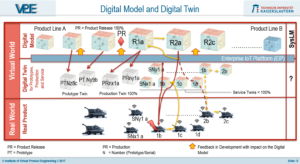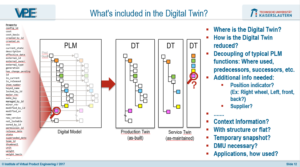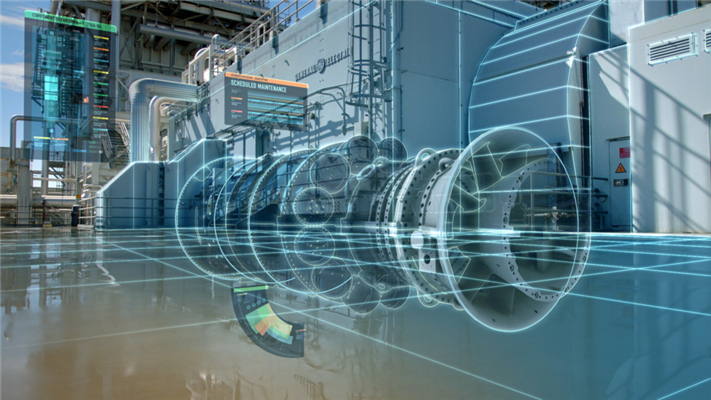Source: GE[/caption]
Thanks everybody for all the feedback on my previous post, Exploring the Digital Twin.
Seemed like there was pretty consistent consensus about some of the basic characteristics of Digital Twins, particularly;
- Instance-based “reflection” of an individual physical item
- Importance of cross-discipline representation (software, electronics, hardware)
As we continue to develop our collective perspectives on the Digital Twin, I’m finding it helpful to get ideas and inputs from as many people as possible in different companies and industries.
In that spirit, earlier this summer I participated in a Digital Twin workshop led by Prof. Dr.-Ing. Martin Eigner at the Prostep Symposium in Germany. The workshop had over 30 participants from Airbus, BOSCH, Daimler, Philips, Schaeffler, thyssenkrupp, ZF and other businesses actively working on Digital Twin initiatives.
The session was well organized especially given that it was less than a half day. Several questions kept coming up during spirited discussions.
How will Digital Twins be Used?
Given that many of the companies in the session have long-life systems products - vehicles, aircraft, industrial equipment, etc. - there was a lot of emphasis on using Digital Twins as a way to monitor operations, improve maintainability and reduce downtime. Industrial Internet, Industry 4.0, “smart factory” and IoT asset field maintenance were clearly top-of-mind.
 About midway through the discussion the topics morphed into more ‘new opportunity / new revenue’ type scenarios. Using connected product data to understand unanticipated usage patterns, identify individually-specialized features, enable targeted product customization and deliver new value.
About midway through the discussion the topics morphed into more ‘new opportunity / new revenue’ type scenarios. Using connected product data to understand unanticipated usage patterns, identify individually-specialized features, enable targeted product customization and deliver new value.
Running Digital Twin simulations to understand purpose-oriented offers quickly took us to alternate business models...
- Power by the Hour (pervasive in aircraft engine markets)
- Product as a Service (subscription for capability)
- Differentiated transactional pricing (think Uber surge pricing)
- Usage-based Billing or Pay per Type of Use (names say it all :-)
- In-app / in-product purchase capabilities (incremental functional delivery or performance enhancement)
These are just the business models discussed in the session. With data being the new oil that pumps through the pipes of artificial intelligence the business model variants are endless which brought up questions around use cases.
What Information is in a Digital Twin?
This is an interesting question. The easy answer is “everything,” however, this response was quickly picked apart by people undertaking real world initiatives.
My sense is that in the future “everything” (or as much as we can get) will actually prevail as the right answer as Digital Twin sophistication increases and storage costs continue to come down, but for now... pragmatism reigns, especially as most organizations are early in their Digital Twin journey.
The concept of the Digital Twin’s evolution over the lifecycle was introduced as background by Dr. Eigner. The key point made was that different information are relevant and necessary for different purposes at different stages.
- Structured information vs. Flat?
- Comprehensive & deep vs. high-level subsets?
- Generic virtual models vs. instance-based product-specific?
- Etc, etc, etc...
Over and over again, everyone came back to the same conclusion: Business model plans dictate use cases, and use cases drive the required informational sets. In other words, the way your company plans to create value and make money will determine the type of Digital Twin information you’ll need.
There was also an interesting discussion at the end that seemingly split the room.
Are the time series data coming back from sensors:
- Part of the Digital Twin? (in addition to product configuration)
- Or something more like the “Vital Signs” of the Physical Thing - which then get interpreted and analyzed against the Digital Twin product configuration?
There was no clear consensus on this, just lots of opinions that could have kept the discussion going for hours.
What’s your take? Do you have a crystal clear view of the Digital Twin? Or do you have 37 new questions for each conclusion you reach?

